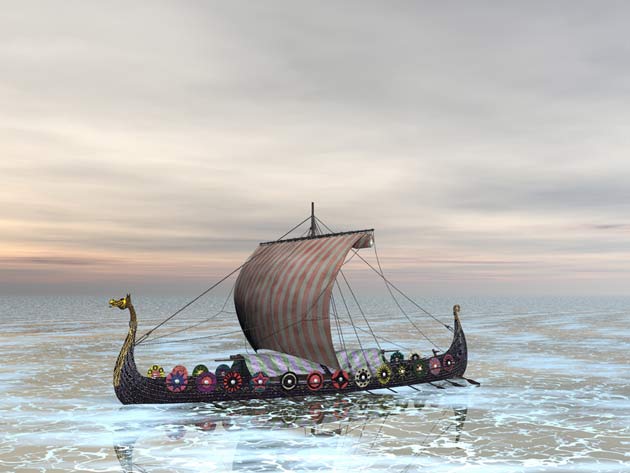
Updated at 9:30 a.m. ET.
A mysterious Viking sundial found in Greenland may have helped the ancient mariners sail at the same north-south latitude across the Atlantic, new research suggests.
The study, detailed Tuesday (April 9) in the journal Proceedings of the Royal Society A Mathematical and Physical Sciences, suggests that the raiding Norsemen might have been even more impressive sailors than previously thought.
"It is widely accepted that Norse people were excellent mariners. Now it seems they used much more sophisticated navigational instruments than we thought before," said study co-author Balázs Bernáth, a researcher at Eötvös University in Hungary. [Fierce Fighters: 7 Secrets of Viking Culture]
Mysterious artifact
Exactly how Vikings navigated the open seas has been the subject of speculation and folklore. Researchers think the Vikings used sophisticated sun compasses to find true north and relied on a "magic" crystal to navigate on cloudy days. (Scientists recently unearthed evidence of one of these Viking sunstones.)
In 1948, an archaeologist discovered a mysterious wooden artifact under the ruins of a Benedictine monastery in a fjord in Uunartoq, Greenland, which was settled by Norse farmers during the 10th century. The artifact, shaped into a half-circle, had a center hole and a zigzag engraved along its perimeter. Several lines had also been scratched onto the plate's interior.
Get the world’s most fascinating discoveries delivered straight to your inbox.
Some skeptics argued it was a household decoration, but most researchers thought it was an elusive Viking sun compass. Past researchers even took a similarly constructed compass aboard replica Viking ships and tested its navigational mettle.
But navigational lines scored on the compass were incomplete, so this ancient sundial wasn't great at finding North. It was off by about one degree, which could lead to days of sailing in the wrong direction, said Amit Lerner, an ocean optics researcher at the Hebrew University of Jerusalem, who was not involved in the study.
Ancient mariners
That led the team behind the new study to wonder whether the compass had a more sophisticated primary function: determining latitude, or the north-south position on the globe.
"Vikings performed latitude sailing, which means crossing open seas along a chosen latitude. For example, they regularly sailed more than 1,600 miles [2,500 kilometers] along the 61st latitude from Norway to Greenland and back. To do that one needs a fine compass or needs to regularly check his or her current latitude," Bernath said.
But wind and ocean currents would have quickly diverted the Vikings' small ships, forcing the mariners to frequently check their latitude to stay on course. While Arabian sailors used the stars to check latitude, Vikings sailed near the Arctic Circle, where the sun never sets in summer. So they must have navigated by the sun, not the stars, researchers reasoned.
The team found that at noon every day, when the sun is highest in the sky, a dial in the center of the compass would have cast a shadow between two lines on the plate. The ancient seafarers could have measured the length of that noon shadow using scaling lines on the dial, and then determined the latitude.
But while the calculations of latitude and longitude may be accurate, there's no way to test their hypothesis, Lerner told LiveScience.
"Nobody can know for sure if it's true or not," Lerner said.
Editor's Note: This story was updated to correct the distance from Norway to Greenland.
Follow Tia Ghose on Twitter @tiaghose. Follow LiveScience @livescience, Facebook & Google+. Original article on LiveScience.com.

Tia is the editor-in-chief (premium) and was formerly managing editor and senior writer for Live Science. Her work has appeared in Scientific American, Wired.com, Science News and other outlets. She holds a master's degree in bioengineering from the University of Washington, a graduate certificate in science writing from UC Santa Cruz and a bachelor's degree in mechanical engineering from the University of Texas at Austin. Tia was part of a team at the Milwaukee Journal Sentinel that published the Empty Cradles series on preterm births, which won multiple awards, including the 2012 Casey Medal for Meritorious Journalism.

